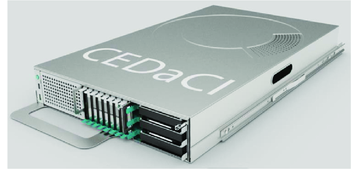It is astonishing to realize that, since the introduction of modern computing during the Second World War and the arrival of the World Wide Web in 1989, over 62 percent of the global population has become connected by digital technology. The data center industry has obviously grown in parallel to enable data exchange, processing and storage. It is fair to say that the scale, scope and speed of development of the data center industry and digital technology exceeds that of any other technology in human history and that expansion and utilization will continue into the foreseeable future.
The unprecedented rate of growth and focus on uninterrupted service provision means that the sector has evolved along a linear - take, make, use, dispose – economic model, where there has been no consideration of what happens to products at end of life. The lifetime of electrical and electronic equipment varies. M&E (air conditioning and power distribution) installations last for about 20 years switches, routers and batteries are generally used for around 10 years
Meanwhile, server life can be as brief as one year, although some hyperscalers such as Google have recently declared that they will now keep servers in operation for five or more years.
What's in a server?
Up to fifty different materials are used to make servers, including metals, thermoplastics, thermoset plastics, paper and a number of materials that are identified as Critical Raw Materials (CRM).
These CRMs are of high technical and economic significance and there is a risk to supply because reserves in the earth’s crust are limited. They are found in geo-politically sensitive areas and current recycling rates are low; the EU originally identified 14 CRM in 2011 but the list was extended to 30 by 2020 and the UK has just identified a similar number of critical minerals. The relatively short life and materials composition of servers means that their environmental impact exceeds that of other data center equipment but all equipment contributes to the continually growing e-waste stream, in which millions of tonnes of valuable resources are lost every year.
This is unsustainable and we need to change current practice and develop a system that conserves and reuses these resources – i.e. we need to move from a linear to a circular economy where products and materials are used for as long as technically and economically viable and at end-of-life they are recycled. This is a massive challenge, which involves change at all stages of a product’s life cycle because the Circular Economy is about much more than recycling, and reuse of materials for the next generation of products.
Actions during every life cycle stage create positive and negative impacts; however, design has the most significant influence and it is said that up to 80 percent of a product’s environmental impact is determined during this phase. Design decisions also have a huge effect on social and economic factors.
Design has the potential to increase positive impacts and to reduce negative impacts, by facilitating a Circular Economy. For example it can determine how easy or difficult it is to disassemble a product for repair or component replacement and upgrade, which is essential to extend product life. Ease of disassembly also affects the ability to separate components and materials economically, and therefore design will indirectly increase recycling rates which will reduce risk to supply and market instability.
Other key design features include modularity and consistent component layout and configuration, which ensures that components from one generation can be used in subsequent generations and facilitates product life extension. Rationalization of materials and fixings also increases the potential for circularity although functionality and durability must not be compromised. Examples include reducing embodied material for a particular component and using fewer screws and other mechanical fixings. Wherever possible use of adhesives should be avoided because they make separation very difficult or impossible without breakage and in some instances, they prevent separation altogether.
Materials mixing should also be minimized because mixed materials discourage or prevent straightforward recycling.
Ditch the plastic
Finally, plastic components should be removed or replaced with metals wherever possible. Although plastic parts are lightweight and cheap to produce, many of those in data center equipment have fire retardant coatings which makes recycling impossible. Substitution with ferrous metals, aluminum, and copper will increase recycling because there is already a well-established recycling infrastructure for these materials. The approach is an example of design for future generations because, unlike plastics which downgrade when recycled, metals don’t lose inherent properties when recycled and therefore, they can be reused to make the same or similar components.
It is relatively easy to implement these design features for large components such as chassis, casings, fans, motors, and heat sinks. However, it is almost impossible to implement these features for printed circuit boards (PCBs) and the miniaturized electronic components attached to them. For example, capacitors are comprised of up to 6 metals, oxides of metals and waxed paper or plastic insulators which are wound together. Similarly, PCBs are multi-layered and include a thermoset composite substrate, layers of copper, solder mask and epoxy (thermoset) ink. Although research into alternative materials is ongoing at present the possibility of developing more circular or sustainable electronic components is remote because of the physical properties and behavior of the materials involved, the performance of which is determined at the atomic level.
Although there is significant potential to improve design for circularity in some aspects of equipment there is limited evidence of execution across the industry. This may change with legislation. For example, points such as the right to repair in the EU Circular Economy Action Plan have already been changed to regulation.
In conclusion, designers and OEMs who want to lead the market should embrace the principles of design for circularity to gain advantage and make products and the data center industry a sustainable sector.



